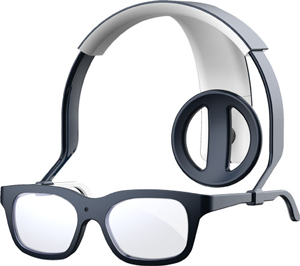An Eye for an Eye?
Science Education
Thanks to recent advances in stem cell research, we are getting closer to replacing cells in the retina lost to diseases such as retinitis pigmentosa and age-related macular degeneration.

Occasionally, a person losing his or her vision to a retinal degeneration or a family member will ask me about complete eye transplantation. "Why can't someone just get a new eye?"
Well, we can transplant corneas, the eye's outer, protective covering. And we can replace lenses clouded by cataracts. (Remarkably, there are about 40,000 corneal transplants and 3 million cataract surgeries in the U.S. every year.)
Thanks to recent advances in stem cell research, we are also getting closer to replacing cells in the retina lost to diseases such as retinitis pigmentosa and age-related macular degeneration. And companies such as Second Sight and Retina Implant AG are having impressive success in the development of "bionic" retinas.
But complete eye replacement is not possible today because of the complexity of the optic nerve, the cable that connects the eye to the brain. The optic nerve is only about 3 millimeters in diameter, yet it contains more than 1 million neurons (connections), making it dauntingly challenging to reconnect to a new eye.
While it is still highly experimental, a few research teams are exploring the possibility of bypassing the optic nerve altogether and using an implant to directly stimulate the visual cortex, the part of the brain that processes visual information. The Monash Vision Group in Australia is developing such a system. It consists of a video camera mounted on a pair of sunglasses which routes visual information through a processor to an implant that stimulates the visual cortex to simulate vision.
The group hopes to test the system in humans in 2014, with a goal similar to that of the bionic retina companies. First, it will provide some basic vision capabilities — for example, enable people to recognize shapes and movement. Then, it will enhance the system to provide more refined vision in the future.
This video I've included above does a nice job describing how the visual cortex technology works.
Although this research is exciting, directly connecting a device to the brain brings up a whole new set of challenges and risks. And while you may have tackled the formidable challenge of connecting a wireless router or DVR, I don't suggest you try this installation at home.
Video courtesy of Monash Vision Group.





